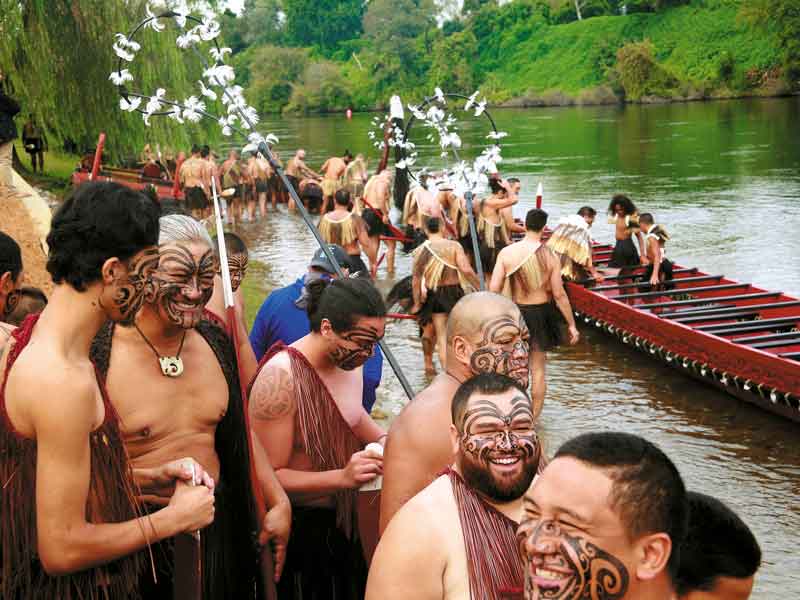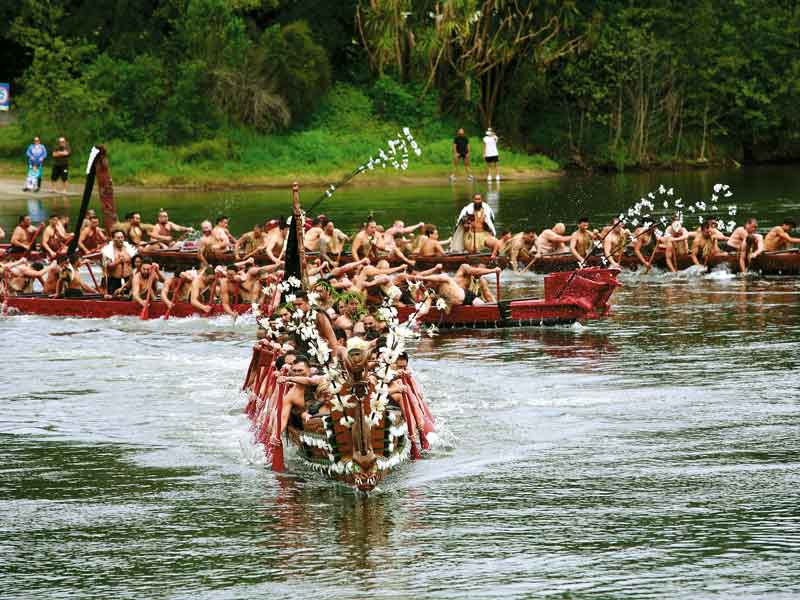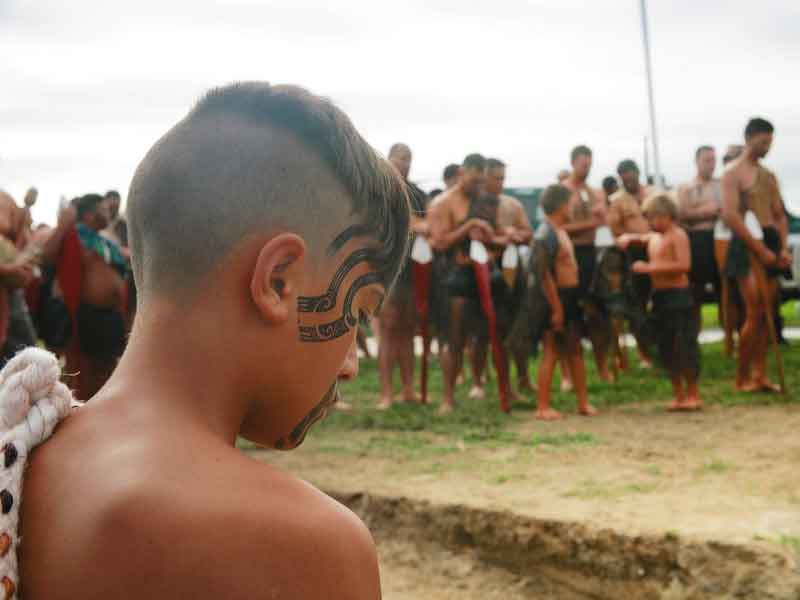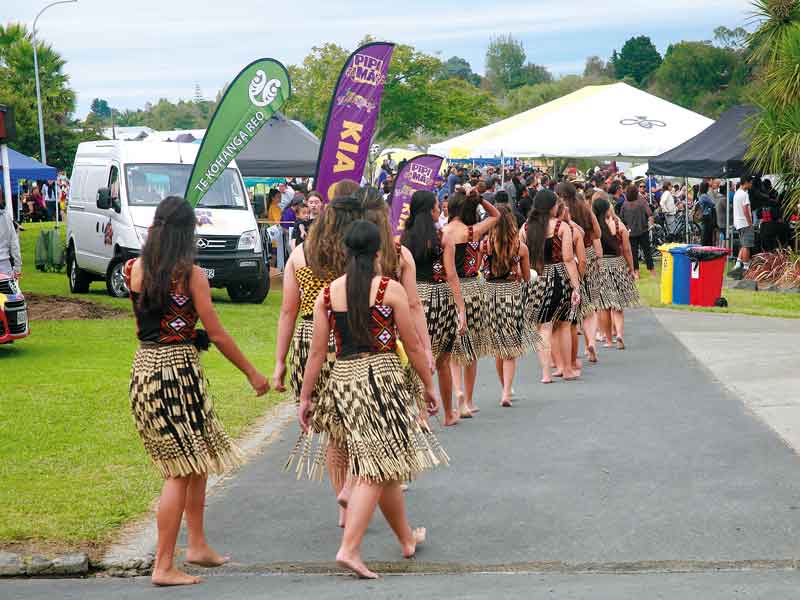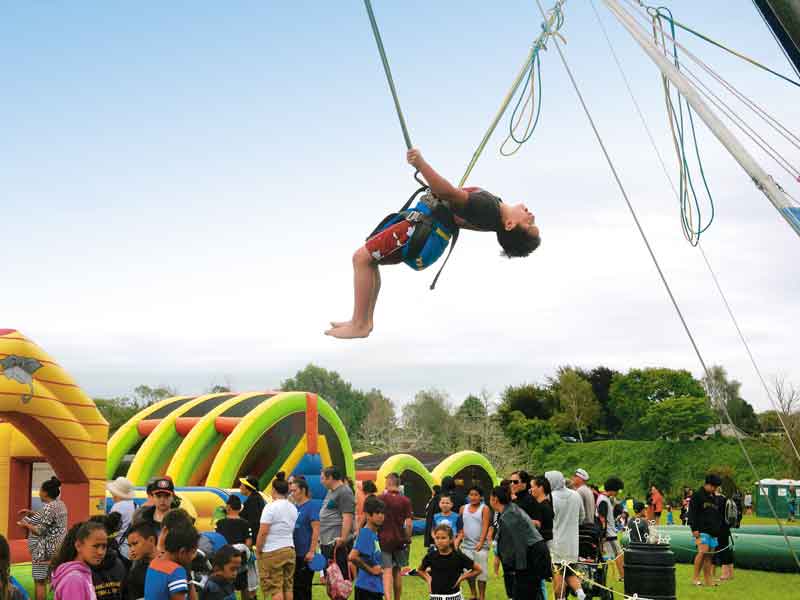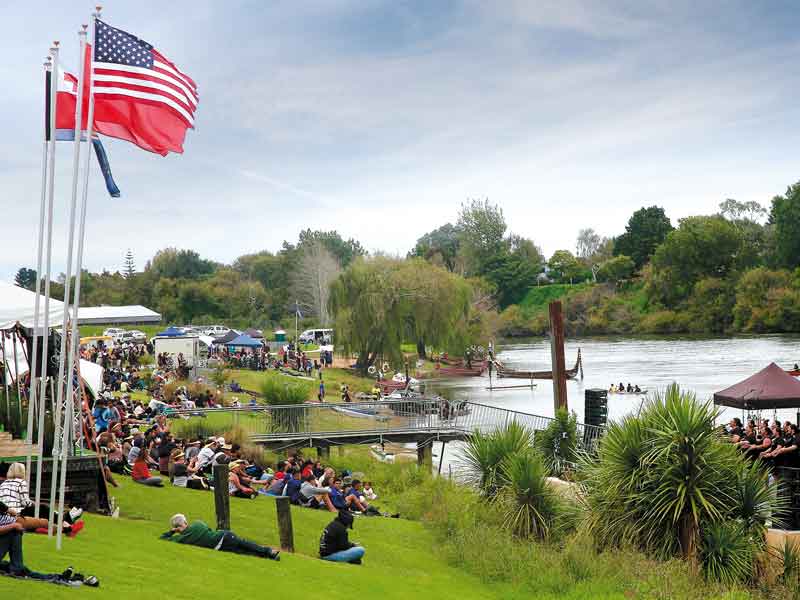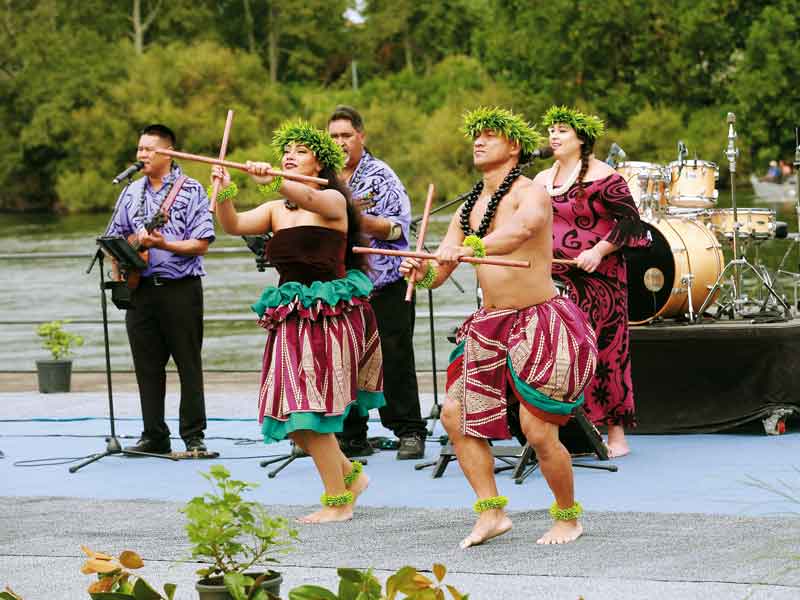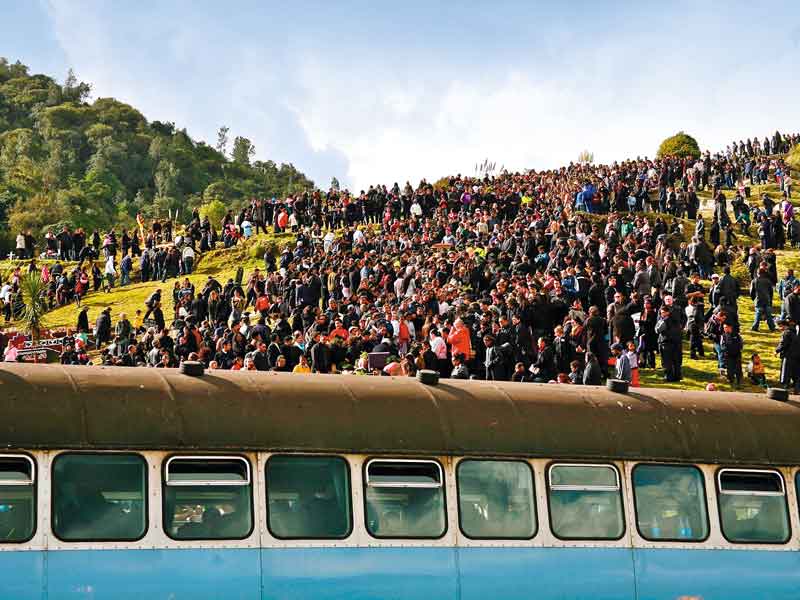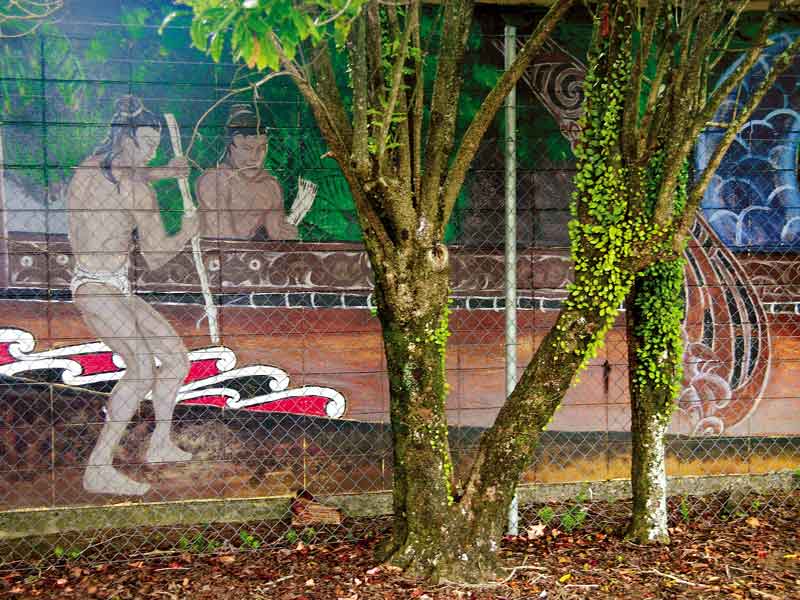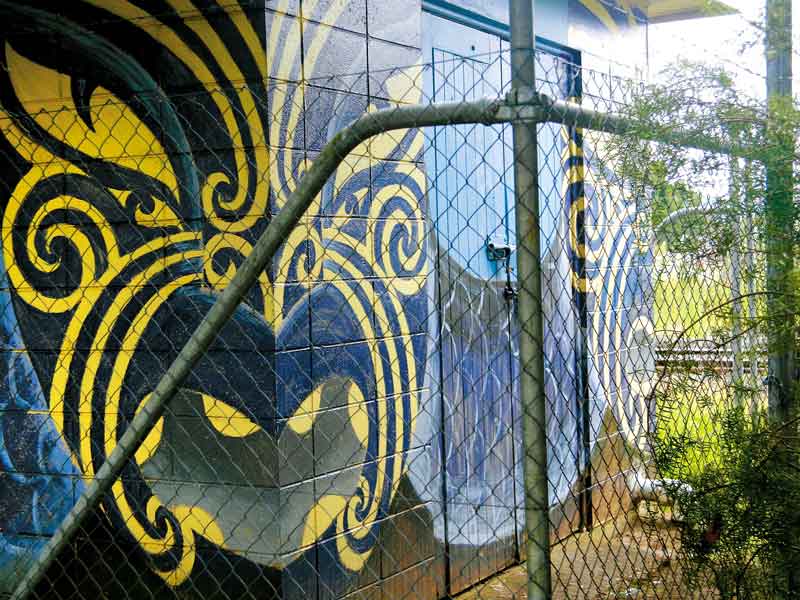The Waikato River in front of the marae grounds suddenly fell silent. The music from the large speakers on the floating stage faded away as several women took their places along the edge facing the river and stood motionless.
Behind them, the Maori King Te Arikinui Tuheitia Paki and other dignitaries were seated in a small, elevated enclosure decorated with foliage and flowers. The large TV screens were turned off, and the amusement rides in the expansive playground came to a halt as scores of people spilt down to the riverbank from the marae and the long lines of commercial stalls to take their places for the spectacle about to unfold. The same thing happened across the river as spectators left their cars and gathered along the riverbank.
It was so quiet you could hear the current of the river as it swiftly passed by creating small eddies and whirlpools on the glassy surface of the dark deep water. Then, in the distance came the unmistakable sound of a putatara (conch shell) overlaid with the chanting of a large war party of paddlers (Waka Taua), faint at first, increasing in volume as the seconds passed.
Applause rippled along the banks as the first of five fully manned waka rounded the corner in a rousing display of sight and sound. Then another waka appeared, and another until all of them were cutting through the water, urged on by the increasing sound of applause, karanga (calling) and cheering.
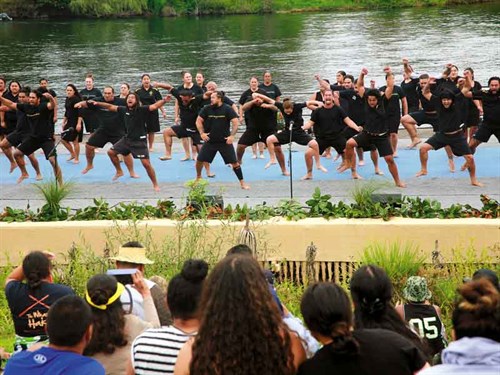
Rangatahi, Tumanako, Tahere Tikitiki, Te Waikura, and Te Raukura were the waka that made up the royal war fleet and to see them in action together was an inspiring sight to behold.
Once past the stage, they began to turn, fighting the current in a skilful and precise rendition of paddle manoeuvres to pause in front of the stage and the royal enclosure to salute King Tuheitia and King Tupou VI of Tonga before moving back up the river to park.
It was a magnificent display of water skills that left me with goosebumps and a lump in my throat. I was so pleased that I drove from Taranaki in the small hours of the morning to be here for this spectacle.
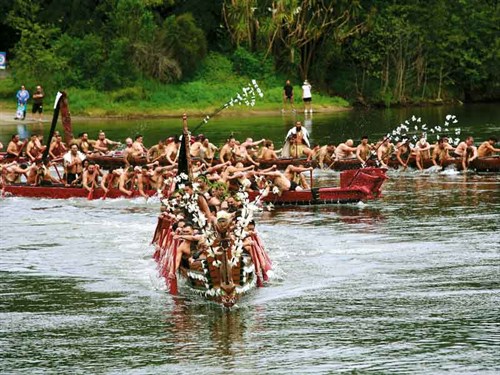
The salute was the highlight of the annual Turangawaewae Regatta, a three-day festival that showcases Maoritanga and the Kingitanga movement in Ngaruawahia. Earlier in the day, I watched the karakia (prayer) being offered and the waka loaded with the paddlers and launched in readiness for the procession.
Before I took my place at the exact position where the waka would turn for the salutes, I decided to check out the attractions spread out along the riverbank. As with any Maori-based festival, food reigns supreme with a never-ending selection to tempt the taste buds.
Entertainment was centred at the barge stage with live bands and kapa haka groups. One group I especially liked was Island Breeze from Hawaii. The different costumes and Hawaiian cultural dances and songs contrasted well with the more familiar performances from the kapa haka groups.
Turangawaewae Marae
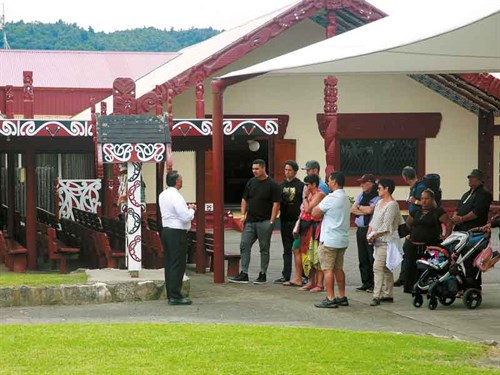
Turangawaewae Marae was open on the day of our visit for a tour, so I seized the opportunity to join a group of about 20 foreign tourists. The history of the marae is fascinating from the struggles of its early establishment, the beginnings of the Kingitanga movement, and the several visits over the years of British royalty, some I wasn’t even aware had happened. Learning the finer details from a guide of the area is essential to getting a personal connection to what is a very beautiful and historic marae.
It has been almost 12 years since I was last welcomed onto this marae, the occasion being the emotional tangi of the late Maori Queen, Te Arikinui Dame Te Atairangikaahu in 2006. I was part of the Taranaki contingent who made the trip in several buses, joining many others from all across New Zealand.
I often think back to the many defining memories of that day: the women seated around the casket dressed in black and wearing head garlands of vivid green fern, the endless processions of dignitaries and politicians of the day, entertainers and celebrities all making moving speeches and bearing gifts.
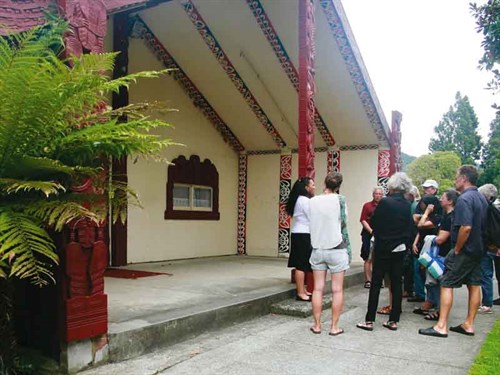
From the marae, the casket was placed on a waka under a canopy of flowers and foliage and, along with several other attendants, the waka began the poignant journey down the Waikato River to Taipiri, the sacred Mountain of Tainui.
By the time I drove to Taupiri, the lead waka had already arrived so I quickly ran to the media platform that had been erected near the jetty that would receive the casket. From this vantage point, I watched history unfold.
Whenever I drive to or from Auckland and pass Taupiri Mountain, I always think back to that day. The casket carried aloft by warriors from the jetty up to the closed highway, across the railway tracks between two passenger trains and then the climb up the mountain flanked on both sides of the route by hundreds of mourners. My final memory of that day was the fully-manned waka, motionless on the Waikato River with paddles held erect, just like the day at Turangawaewae Marae.
Ngaruawahia is now a little harder to reach with the town recently bypassed by the Waikato Expressway. Despite this, I would recommend taking a detour, especially if there is a waka event at Turangawaewae. With the exception of Waitangi Day, there is nowhere else in New Zealand where you can experience the power and majesty of a fleet of fully-manned waka on one of New Zealand’s major rivers.
Not even my favourite band playing at WOMAD could keep me away from the Regatta. It was a driving challenge but I made it back to Taranaki and the Bowl of Brookslands with 10 minutes to spare before show time.
Additional information
- The Turangawaewae Regatta is an annual three-day event scheduled in March
- There is a cost for the guided marae tour
- There is ample parking near the marae complex for motorhomes and caravans
- The regatta is a family day out and features craft and food stalls plus a fun fair

